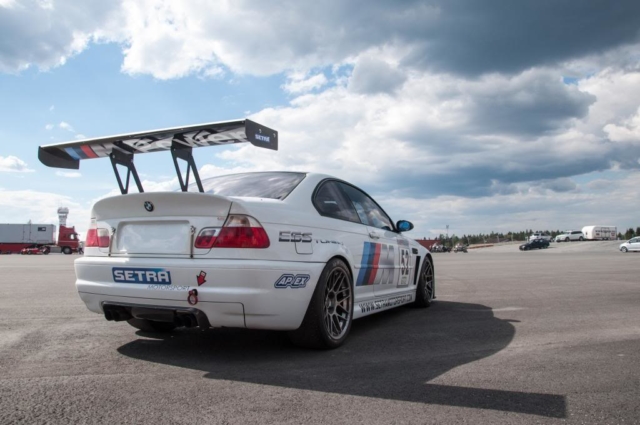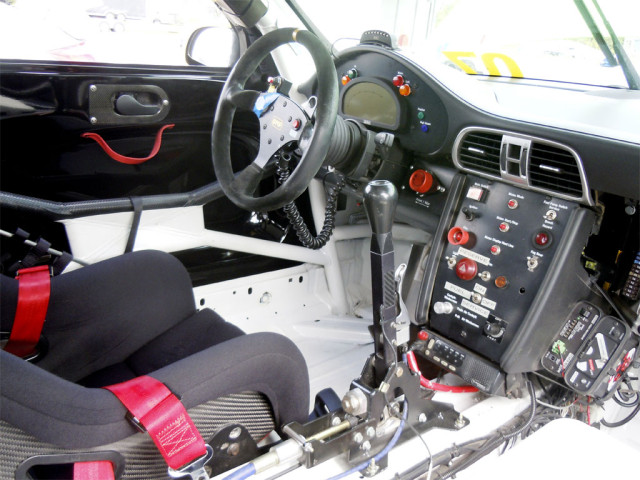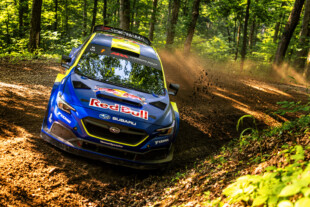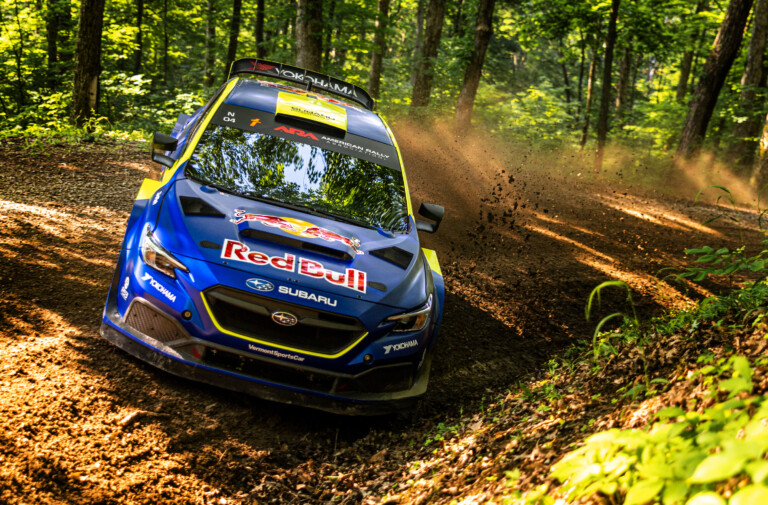It’s been a regular lately – and for good reason. The Setra Motorsport M3-R is one hell of a machine, especially considering it started life as a humble, plush roadcar and has since grown into a stellar racing car. Benefiting from an ESS supercharger kit and supporting modifications, the S54 engine now outputs somewhere in the neighborhood of 600 horsepower, but that power is applied to the road like a athletic racer would, not a muscle-bound roadcar.
It doesn’t take long to see that the car and the driver are working in harmony; the limits of grip, which are quite high, are well-known by driver Inge Hansesaetre, and quick dabs of opposite lock are seldom seen, but often enough to suggest that the rear tires are at the limit. Thankfully, that combination of a low-displacement, high-revving engine with the linear response of a supercharger mean a very smooth power delivery. Just about everywhere, the rear slicks aren’t easily overwhelmed by the prodigious amount of grunt.
Now, any driver with some on-track experience can attest to the capability and versatility of the GT3 Cup Car. In many’s eyes, it’s the definitive GT racer – Porsche sold over 2,200 units of the 997 model! It’s relatively affordable as far as race cars go, and while far from easy to drive, is a potent package that can be depended upon. For privateers and customer teams, it’s the easiest way forward.
What might surprise the uninitiated is the horsepower amount a powerplant such a beast produces. Like the roadcar, the 997 Cup uses a 3.8-liter engine making roughly 450 horsepower. The engine is largely similar to the one found in the road car, though it uses a racing exhaust system and catalytic converter, and air restrictors typically keep it from producing that much power. Additionally, the Cup Car has been lightened significantly – down to an impressive 2,640 pounds. That minimization of heft goes a long way in acceleration – as is visible in this duel.
With an additional 400 pounds of weight and, more crucially, a manually-shifted, clutch-and-lever gearbox, the M3 simply cannot keep up with the Cup Car once the ‘Ring straightens slightly. Sure, the M3’s carrying a passenger, too, and it’s possible that the Porsche might be running without restrictors as it’s not a formal race, but a trackday at the Nurburgring. However, the main aid in acceleration is the sequential gearbox in the Porsche. With every pump of the shift lever, the driver saves several tenths of a second. Really, no racecar is right without one of these trannies, which allow for a near-seamless delivery of power.
Matching the Porsche in cornering speeds and outbraking the Stuttgart stallion on occasion, it certainly has an edge in the faster bends. However, the Porsche’s slow-speed traction is incredible. Every first and second-gear corner, the Cup Car rockets away without the slightest hint of wheelspin, whereas the M3-R has to deliver that thrust with a little caution to avoid a sideways moment. In mid-speed corners, the two look pretty evenly matched. On a varied track like the Nurburgring, that gives both machines plenty of chances to shine.
When it comes to driving line, Inge tends to turn in slightly early but takes an economical line; not covering much road. Contrast this to the Porsche’s driver, who turns in late and hard to try and avoid loading the front tires for too long. Perhaps the most striking piece of driving occurs between 4:15 to 4:40, where Inge claws back a huge gap with some quick-witted traffic management and a lot of late braking – aren’t 911s supposed to be superior in that department?























